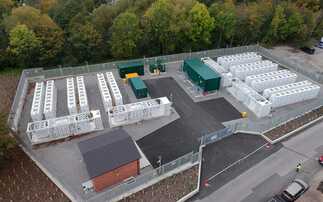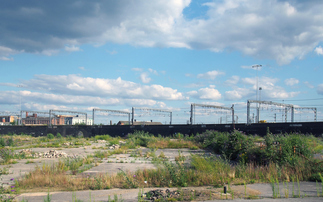From tidal turbines to restored oysters, Bordeaux maps out plans for a sustainable estuary
It may be more famous for its wine than its seafood, but Bordeaux could be about to start harvesting oysters for the first time in over 20 years as long standing efforts to improve the biodiversity of the giant Gironde Estuary start to bear fruit.
Speaking at the first day of the inaugural Global Estuaries Forum in Deauville, Marc Lafosse, councillor for innovation and industry in Bordeaux and founder of the Energie de Lune tidal energy project, revealed that a recent study by Bordeaux University had confirmed that it was safe to harvest oysters from the salt marshes of the Medoc region.
The practice had effectively halted in 1986 after studies revealed that cadmium pollution from a local factory had made it unsafe to eat some of the local shellfish.
However, Lafosse said recent tests had now shown that the pollution levels in the region's silt were now low enough to make the oysters safe to eat once again. He added that the work to bring oyster growing back to the area were part of a wider strategy to boost the fishing industry in the area that had also seen sturgeon successfully re-introduced to the estuary.
The return of the potential return of oyster fishing to the area is just one of the successes of a major strategy from the local government that aims to balance the requirements of the local economy with the unique habitat of the Gironde Estuary, while also addressing escalating climate risks.
Lafosse said the strategy was on track to get a further boost early next year with the opening of a world-leading tidal energy testing and research centre that looks to provide a tidal energy version of Cornwall's Wave Hub. The government-backed SEENOH Bordeaux project is on track to open one of the world's first grid-connected tidal turbine demonstration sites, which will provide three separate berths for tidal energy turbines. Two platforms will be made available for submerged 100kW devices, while a further berth will support 50kW floating devices.
Lafosse said the site was perfectly suited to testing emerging tidal turbine technologies, as it boasts flow rates of 3.5 metres per second, making it one of the fastest flowing tidal estuaries in the world.
"We came to realise that the estuary was a place for innovation and industry through tidal power," he explained. "There is the potential for us to support the development of a full scale global market both for river estuary turbines and marine tidal turbines."
He added that with 140 different tidal turbine designs being pursued globally the project was keen to provide developers from around the world with an established, grid connected test site where many of the administrative barriers to tidal energy technology deployment were already overcome.
He also predicted that tidal turbines could play a major role in the world's energy mix in the coming years, as they can exploit a reliable energy resource that is often located close to industrial power users, while also having a relatively low impact on the local environment.
BusinessGreen is media partner of the Global Estuaries Forum







